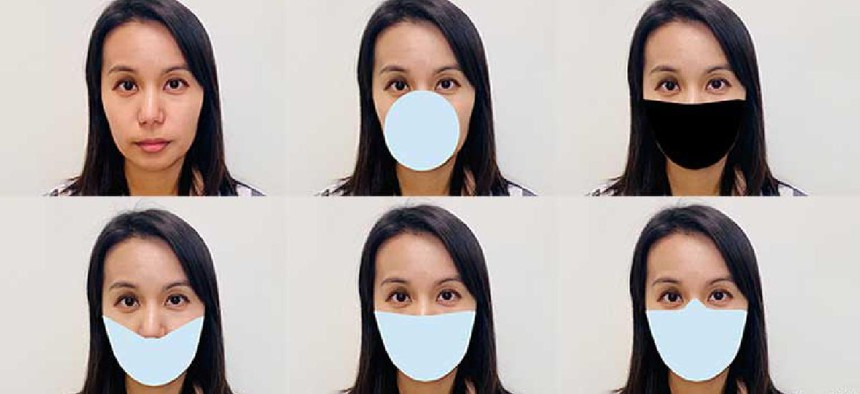Facial recognition retools for masked faces

To help developers improve the accuracy of facial recognition systems on people wearing masks, the National Institute of Standards and Technology published evaluation data on 89 commercial algorithms developed before the pandemic.
As expected, current facial recognition algorithms have trouble recognizing people wearing face masks, but the National Institute of Standards and Technology is laying the groundwork for more sophisticated systems.
According to NIST’s preliminary study that tested 89 commercial facial recognition algorithms developed before the pandemic, error rates ran between 5% and 50% when matching photos of a person with and without a digitally applied face mask. This “one-to-one” matching is commonly used for identity verification such as unlocking a smartphone or crossing a national border.
The NIST research team digitally applied mask shapes to about 6.2 million images of 1 million people collected from U.S. travel and immigration datasets. Because people wear a variety of masks, the team created nine digital mask types that differed in shape, color and nose coverage to test the algorithms.
They found that the masks hid enough of a person’s face that the facial recognition algorithms was frequently unable to make the facial geometry measurements and calculations required for matching and that the more of the face the mask covers, the lower the accuracy of the match. False negative results increased, but false positives remained relatively stable or slightly decreased.
Admittedly, none of the algorithms NIST tested were designed to work with face masks, and the digital masks created for the test may not be indicative of results with actual face coverings, NIST said. However, the tests underscore that a pre-pandemic algorithm might be affected by a substantial number of subjects wearing face masks.
In April, researchers at Wuhan University in China compiled a dataset of 5,000 cleaned and labeled images of masked faces of 525 different individuals, along with images of 90,000 unmasked faces to help developers adjust their facial recognition algorithms to focus on similarities detected in the eyes of the photographed subjects.
NIST said it plans on releasing a series of reports, assessing different aspects face masks on performance of facial recognition systems. First up will be an evaluation of the accuracy of more recent “mask-enabled” algorithms in both one-to-one and one-to-many comparisons.
NEXT STORY: Zero trust: Moving from concept to reality





